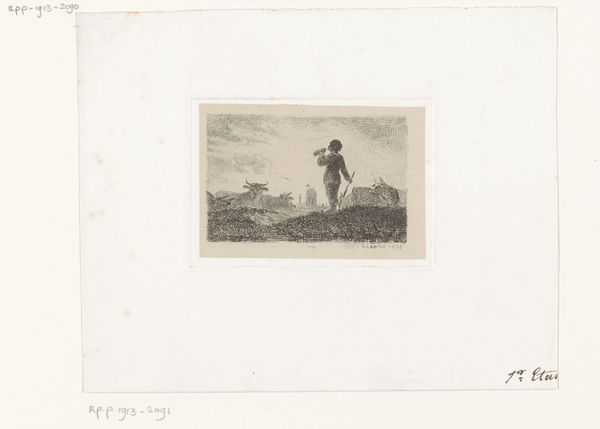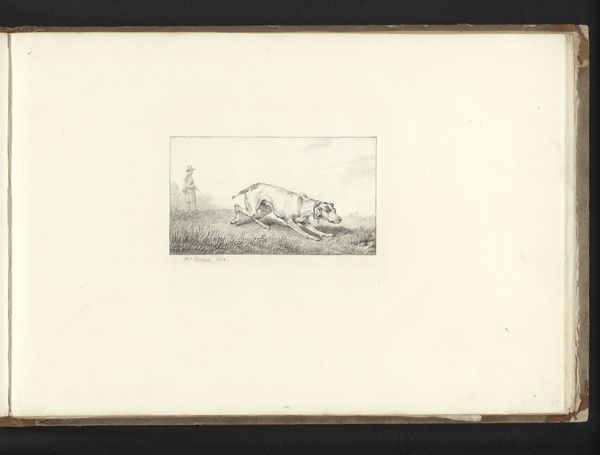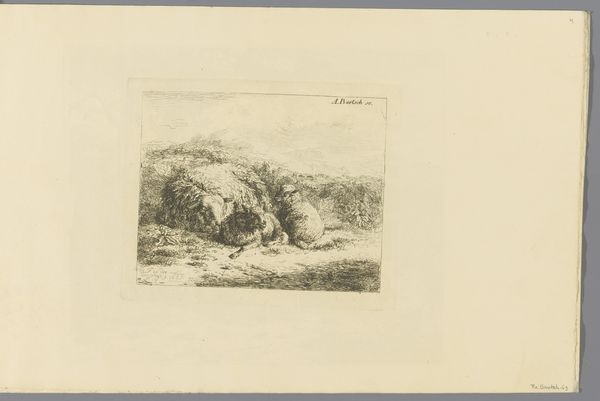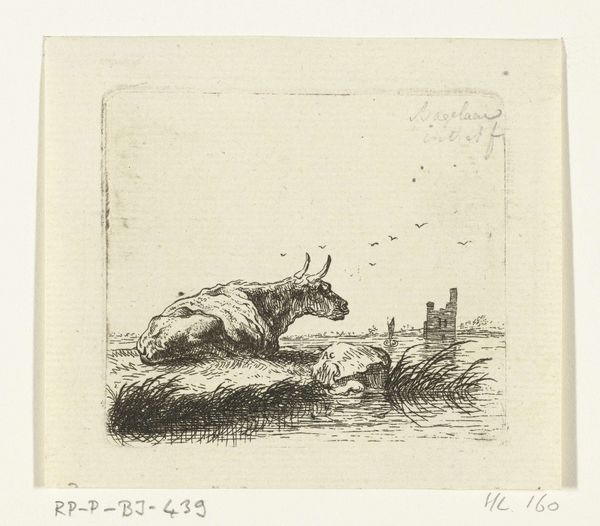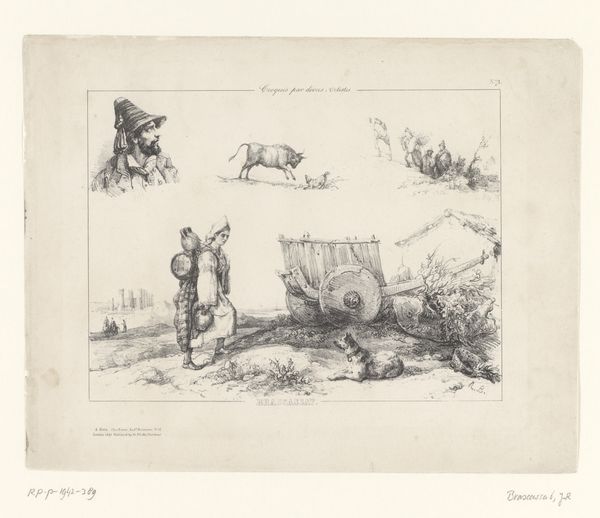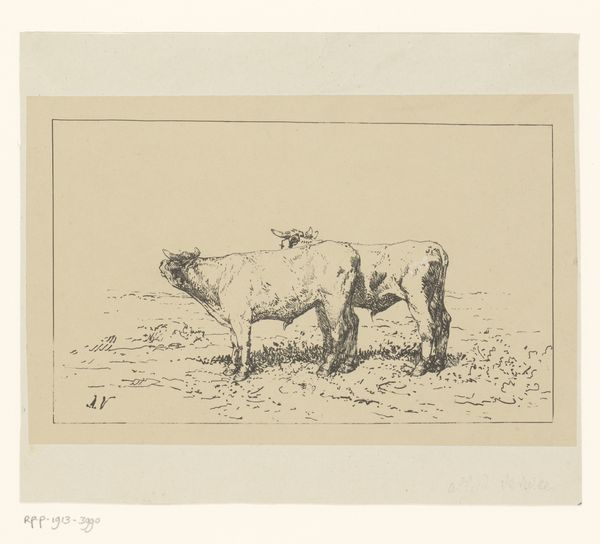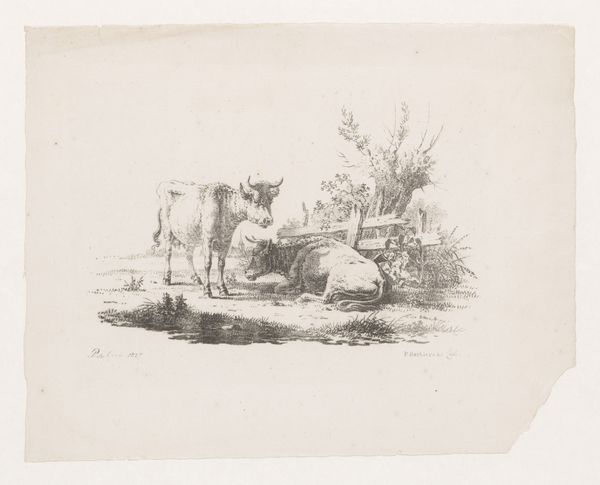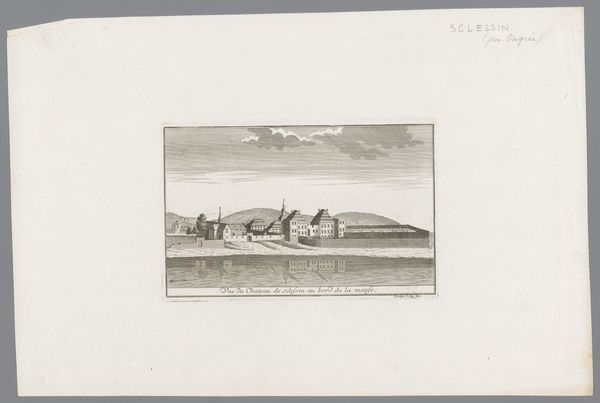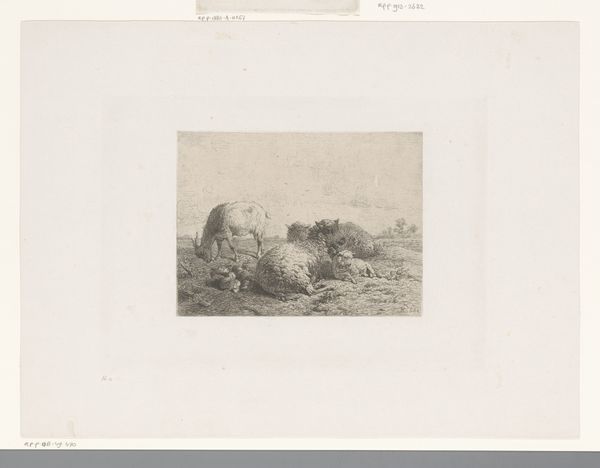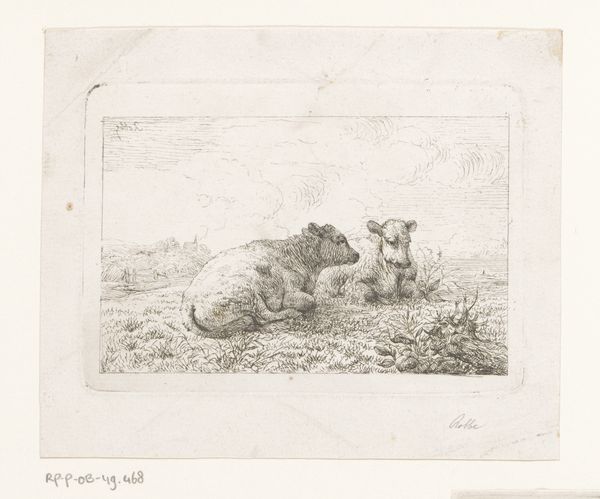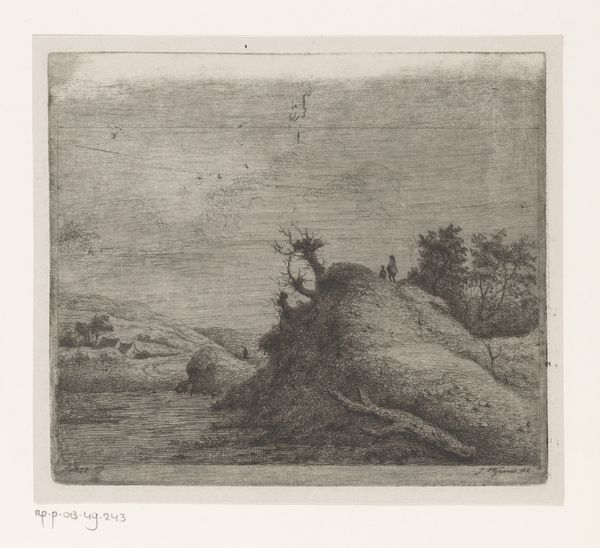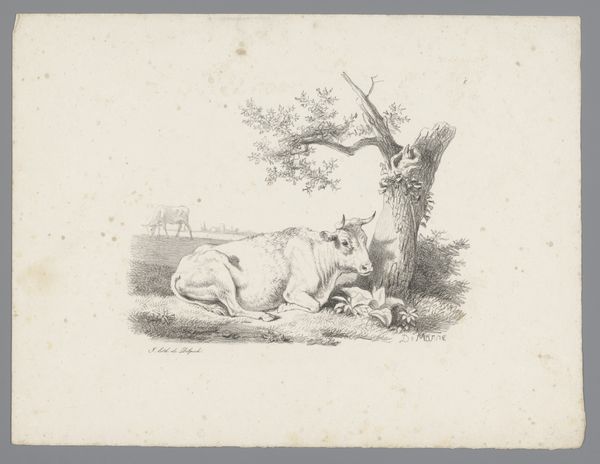
drawing, etching, paper
#
drawing
#
etching
#
landscape
#
paper
#
realism
Dimensions: height 108 mm, width 148 mm
Copyright: Rijks Museum: Open Domain
Curator: "Landschap met geit in het gras," or Landscape with Goat in the Grass, an etching on paper made around 1830 by Louis Robbe. It's a sweet glimpse into a bygone era. Editor: There's a lovely stillness to it, wouldn’t you say? The goat seems so content, almost regal, really, sprawled in its little kingdom of grass. Like it’s posing for us! Curator: In nineteenth-century Dutch art, realism became very fashionable. There was a desire to capture life authentically. It spoke to a growing middle class interested in a more personal and naturalistic artistic experience than past eras provided. Editor: And that's what hits me: the plainness of it all! Look how honest the depiction of this goat and the muted palette used by Robbe, but there is also humor here! Curator: It's indeed part of the charm of genre art like this. Artists like Robbe helped shape our understanding of rural life and idealized animal representations, too. Editor: I can imagine wandering into this scene. The other goat peacefully feeding at a distance enhances the serenity. The simple life, no artifice… Curator: What resonates with me is how Robbe reflects social change. In this time frame, these glimpses of landscapes offered a reassuring vision. It emphasizes natural beauty in an ever-changing world. Editor: It’s got this odd, magnetic power. It draws you in, invites you to breathe in the quiet of the scene. Maybe art reminds us of a basic need to find tranquility in a noisy existence. Curator: Very well put. Art reminds us that observing simple subjects can give insightful glimpses into society itself, or rather an era. Editor: So true! Like this goat that speaks without bleating and gives the visitor more than initially expected!
Comments
No comments
Be the first to comment and join the conversation on the ultimate creative platform.
